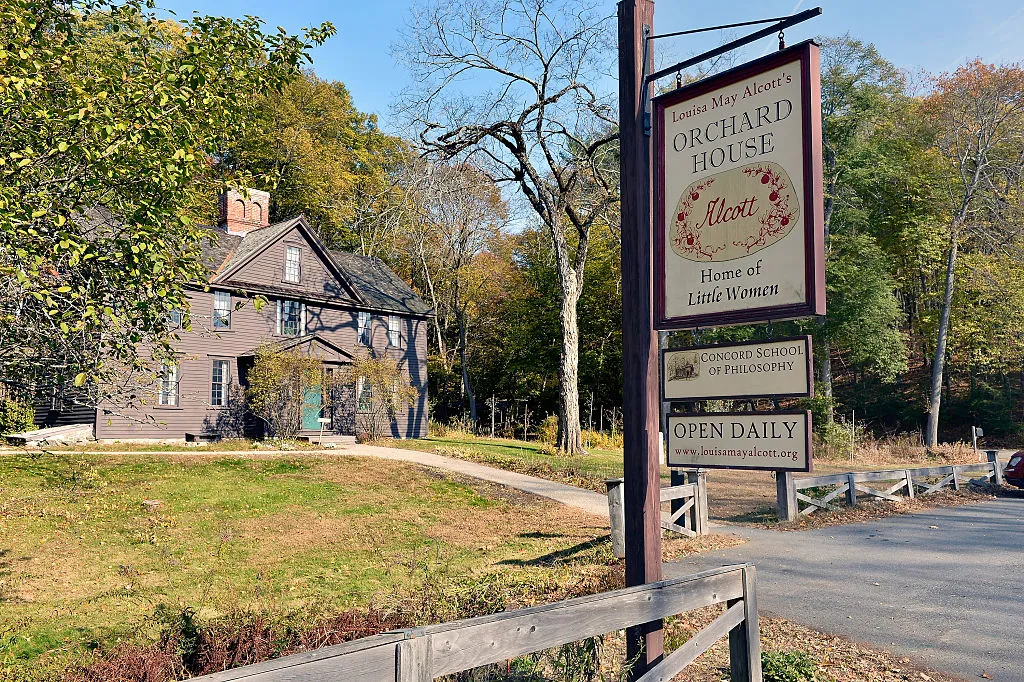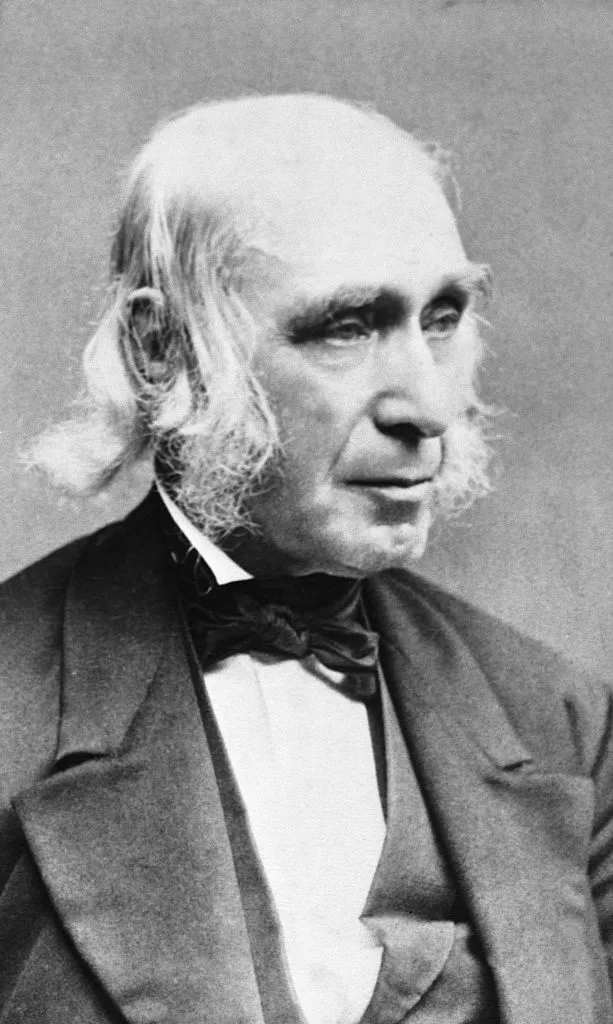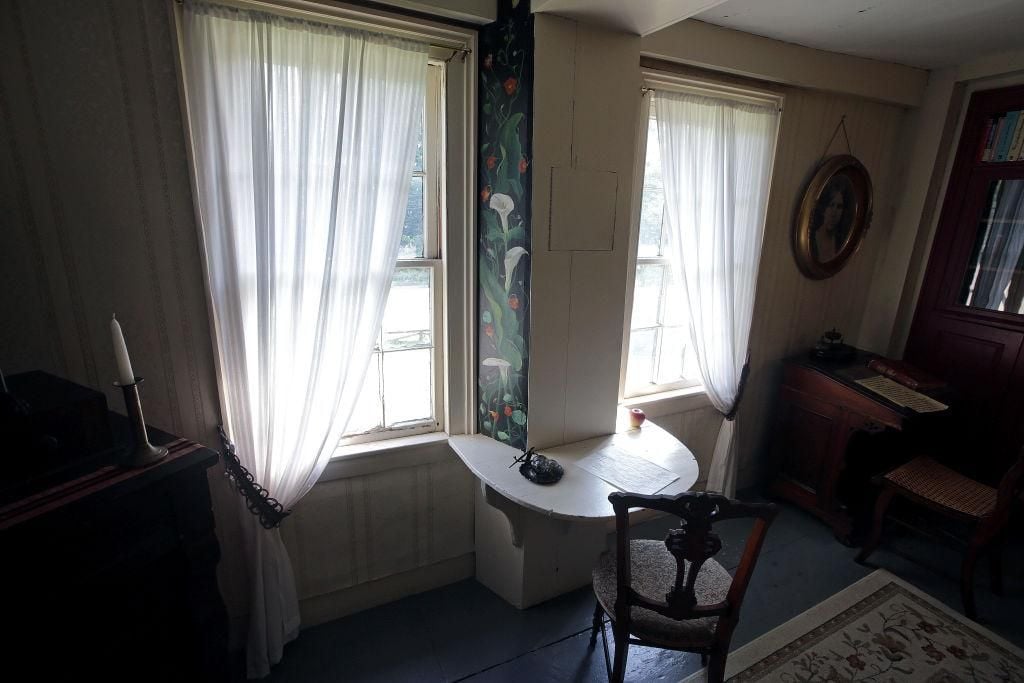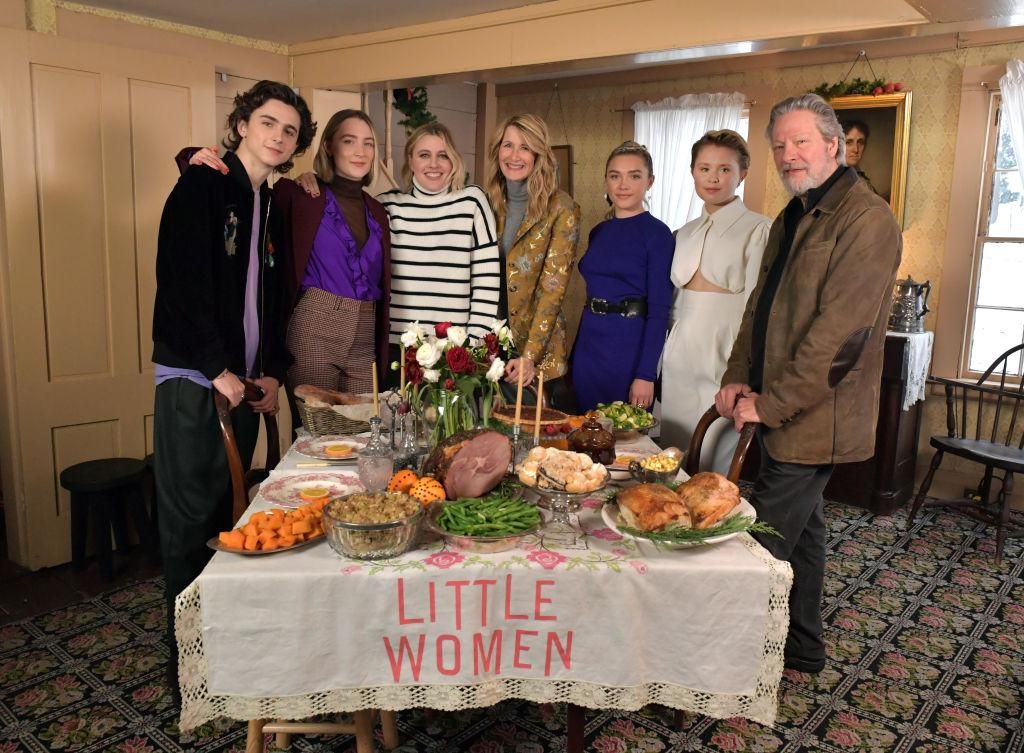The New ‘Little Women’ Brings Louisa May Alcott’s Real Life to the Big Screen
More so than in previous film adaptations, writer and director Greta Gerwig weaves the American writer’s own experiences into the classic story
/https://tf-cmsv2-smithsonianmag-media.s3.amazonaws.com/filer/29/a3/29a3b7b0-4eb4-469b-996d-d4ab2f38101d/littlewomen.jpg)
Visitors who flock to Orchard House in search of some sign of their beloved March sisters of Little Women fame won’t be disappointed. At the Concord, Massachusetts, museum that housed Louisa May Alcott and her family in the 1860s, they’ll find the flowered mural May (who inspired the book’s character Amy) painted on the wall over Louisa’s writing desk, and a gnarled pillow that “Lu,” like Jo March, used to indicate her mood.
For Greta Gerwig, writer and director of the spirited new film adaptation of Little Women, shooting the movie in Concord proved key to imagining Meg, Jo, Amy and Beth. “I know families like that, where they let the kids write on the walls,” she said, in a panel following a screening of the film in late October. “It was such a gift to be there, steeped in the place. People leave traces.”

Gerwig’s Little Women was not the first to film in Concord, a 1918 silent version has that distinction, but it does incorporate aspects of Alcott’s real life to an unprecedented degree. In doing so, she is drawing from the wealth of new scholarship and full-length biographical works devoted to Alcott. Alcott is no longer regarded as a sentimental author for girls, but as a pioneering writer of the first rank. In her recent book, Meg, Jo, Beth, Amy, tracking responses to Little Women over the last 150 years, Anne Boyd Rioux writes “Little Women is arguably the most influential book by an American woman.” A very partial list of women who claim Alcott as a key influence include Simone de Beauvoir, Ursula Le Guin, Gertrude Stein, Doris Lessing, Zadie Smith and Elena Ferrante. “It is hard to overstate what she meant to a small, plain girl called Jo, who had a hot temper and a burning desire to be a writer,” J. “Joanna” K. Rowling is quoted as saying in the same book, to give some sense of how widely Alcott’s influence is still felt.
“I wanted to give the woman her due,” Gerwig explained with some urgency at the Los Angeles screening. “She had to save her family with her writing.”
Where the March family is poor in a genteel way, the Alcotts were “poor as rats,” as Louisa put it bluntly in her journal. A man before his time, her father, Bronson Alcott, resembled an idealistic hippie. His all-girl family would benefit from his broad-minded ideas on education and equality. He encouraged Louisa, like all his students, to journal about her personal experiences, for instance, and he consistently gave her positive feedback on her work. A fervent abolitionist, he made a point of including a black student in his experimental Temple School in Boston in 1834. His daughters were the beneficiaries, too, of his illustrious friendships with people like Ralph Waldo Emerson, who financed their original move to Concord, and Henry David Thoreau, Louisa’s tutor and personal guide to the Concord woods. Elizabeth Peabody, the assistant at the Temple School (as well as future sister-in-law to Nathaniel Hawthorne) wrote a bestseller, Record of a School, about Bronson’s innovative methods based on curiosity and fun, which turned Bronson into a minor celebrity. Yet Bronson also had a tendency to alienate his wealthy followers with his extremism and arrogance, leading to the closure of one educational venture after another. His refusal to take any job unconnected to his philosophical interests frequently left his family exposed, with ever growing debts and a rapidly dwindling fund of family and friends willing to take up the slack.
Their low point came in the winter of 1843—Louisa was 11—when the family nearly died during an ill-fated experiment in communal living. Egged on by one of his wealthy supporters, who leased a farm in Harvard, Massachusetts, the family joined a small group attempting to put some of Bronson’s most outlandish ideas into practice: homesteading without any livestock and with no one pressured to work in any way, with the notable exception of Bronson’s wife, Abigail, aka Marmee, who bore sole responsibility for all the cooking, cleaning and child care. The family had long been vegetarian, but at Fruitlands (the name they gave the commune, despite the lack of productive trees), eggs and milk were expressly forbidden (for animal rights), as was sugar and coffee (because they were produced by enslaved labor in the Caribbean), warm woolen clothing (out of concern for the sheep), and lamp light (to spare the whales whose blubber served as fuel at the time).
With the four sisters stuck in a freezing attic room, little to eat, and dwindling attention from Bronson, who had begun to question the ethics of the nuclear family as an organizing social principle, Abigail arranged an emergency exit with the children to a nearby family. Her brother paid their board until the late spring.

Although Bronson was eventually to rejoin the family, he fell into a deep depression and stayed in bed for weeks, face to the wall, neither eating nor communicating. At this point, Abigail realized she and the girls would need to count on themselves for survival in the future.
Louisa, who shared a birthday with Bronson, would step into the role of breadwinner for her extended family once and for all following the success of Little Women, published in the late 1860s. “She really took on the role of the man in the family,” says Susan Cheever, author of Louisa May Alcott (2010), one of the most sympathetic, engaging biographies of Alcott to date (and herself the daughter of a looming father, John Cheever). “I don’t think that was easy, I think she was pushed into the role.”

Whereas past adaptations have tended to emphasize the romances that round out Little Women, Gerwig’s version alters the structure to focus on Jo’s development as a writer. Gerwig highlights the act of writing, building off how taxing it was for Alcott herself, who was also a runner, a hobby almost unheard of at the time. “Running and writing were both physical for Alcott. I wanted to treat the writing like you would a fight or a sex scene,” Gerwig explained. As a filmmaker she brings in telling details from the Alcott biography like the fact that Alcott taught herself to write with either hand so that when her right hand started to cramp she could muscle through without a break. She did this so that she could produce copy with astonishing speed. With the Alcott family’s survival hanging in the balance, Louisa’s writing was a matter of some urgency. In the movie, Jo works by candlelight, pages carpeting the entire floor, Marmee silently leaving her meals outside her door. “I wanted to give Jo writing space, see the book spread out like a quilt,” Gerwig said..
There has been considerable attention to the way Gerwig alters the story’s time-line, cross-cutting scenes from early and late in the book. Critics have described Gerwig’s work, variously, as a snow globe vigorously re-shaken and as a chef chopping up her ingredients for a new meal, but less attention has been paid to how the main action is bookended by episodes from Louisa May Alcott’s real life as a writer. This allows a reframe of Alcott’s decision to marry Jo to the older Professor Friedrich Bhaer, an intellectual who befriends and critiques Jo’s writing. Alcott originally wanted Jo to be a working spinster like herself, but though she resisted Jo’s obvious match with rich, sympathetic neighbor Theodore “Laurie” Laurence, in the end she capitulated to the demands of her editor for the expected resolution to a book for girls. The new version keeps Jo’s romance in the plot, while still making the publication of Little Women—and the deft negotiation for the royalties from it—the story’s real happy ending.

Although the liberties Gerwig takes with the story-telling are risky given that this is a deeply familiar classic, in effect she’s restored the most startling quality of Little Women, its sense of immediacy and everyday life. Little Women retains the capacity to surprise, as biographer Cheever points out. Asked what springs to mind when she thinks about Alcott, Cheever’s thoughts immediately go to the episode when Jo, furious that Amy has burned her only copy of a manuscript, considers letting Amy drown by falling through thin ice while skating. “Yeah, that chapter comes right off the page. Well, it’s real life, it’s real passion. All the things we actually feel about the people we live with,” Cheever says.
“In a way,” Cheever continues, “Little Women was the first autofiction. If you look at Elena Ferrante, or Karl Ove Knausgård, or even Rachel Cusk, these people who just write down what happens—you know, that’s what she did with Little Women. And it came out great!”

